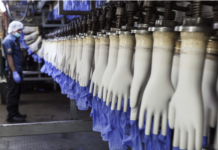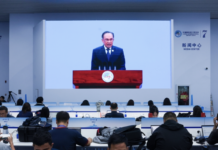KUALA LUMPUR, Jan 18– Physical travel documents such as airline tickets and boarding passes may soon be a thing of the past for passengers at the Kuala Lumpur International Airport (KLIA) with the roll-out of the first phase of the Single Token Journey initiative in the first half of this year (1H 2021).
Malaysia Airports Holdings Bhd’s (MAHB) group chief executive officer Datuk Mohd Shukrie Mohd Salleh said the initiative utilises facial recognition technology to provide passengers with one single-token biometric identification authentication.
In a statement today, he said this will allow passengers to go through their entire airport journey without having to show their boarding passes at all touchpoints, from check-in right until the boarding gates.
“The authentication process is expected to take about five seconds for each passenger at every touchpoint, thus shortening their airport journey considerably.
“The first phase of the technology roll-out is expected to be completed in 1H 2021, where 50 self check-in kiosks, 20 check-in counters and 56 eGates at security checkpoints and boarding gates at both KLIA Terminal 1 and Terminal 2 will be equipped with facial recognition technology,” he said.
He said the Single Token Journey is a major component of the organisation’s Airports 4.0 initiative — one of among several identified mission-critical projects that went ahead despite constraints due to the COVID-19 pandemic.
“Apart from the obvious benefit of improving our service levels to passengers by reducing airport processing time, it will also enable our passengers to go through a completely contactless experience and enhance their safety at the airport within the parameters of the new travel norms.
“Additionally, it will also minimise instances of fraudulent identity use,” he said.
The technology will also be integrated with the MYairports app where passengers can enrol their facial authentication even before they arrive at the airport.
Integration with the immigration system will also enable foreigners to utilise the Immigration Autogates instead of having to queue at the counters.
In the future, the technology may also be expanded to include other touchpoints such as retail purchases as well as access to airline lounges.
“Our aim is to make the airport future-ready especially when travel picks up again.
“We are making this technology available at the airport because we also need to restore confidence among air travel passengers, and we hope to gain the cooperation of our airline partners to integrate their processes to adapt to this available technology,” he added.
















